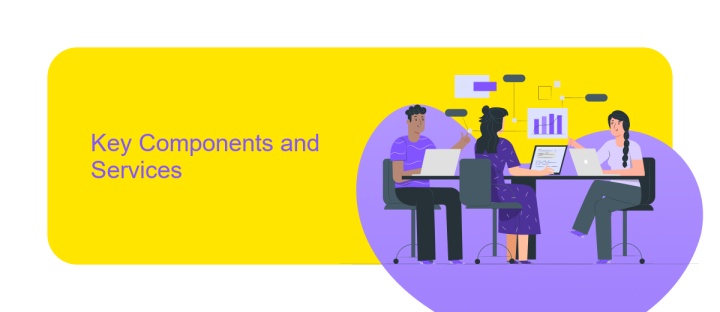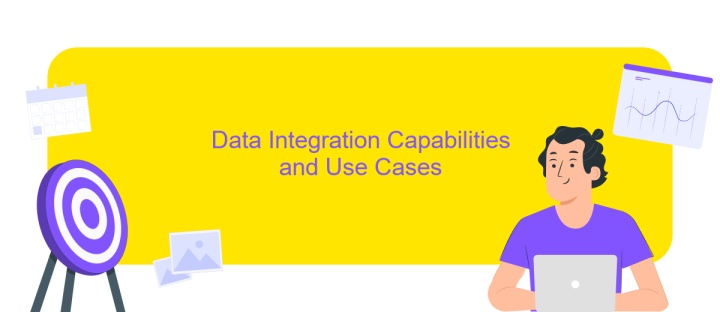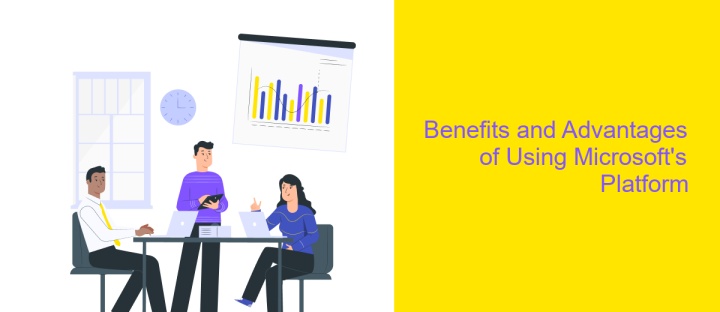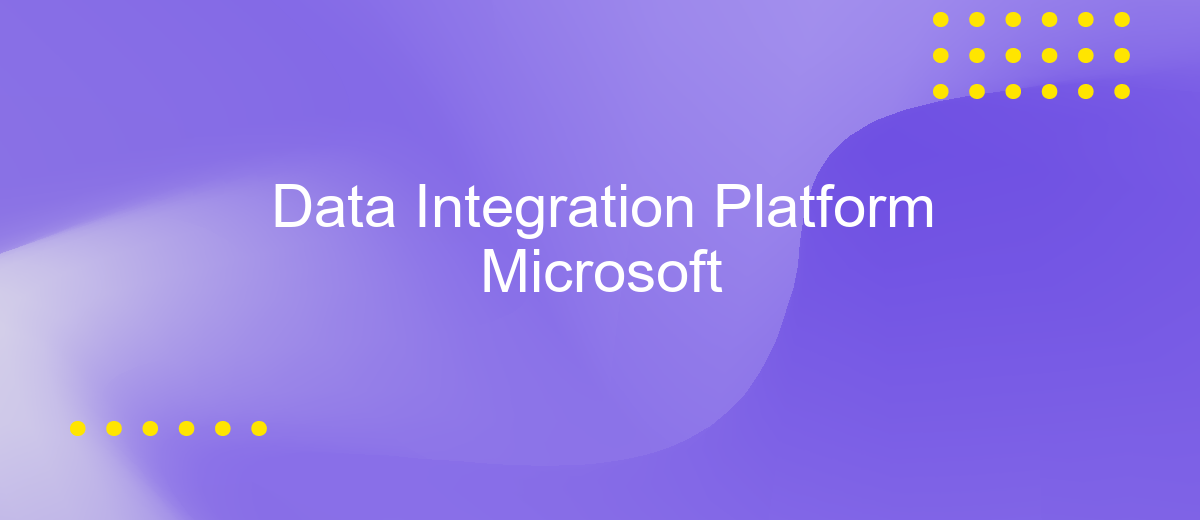Data Integration Platform Microsoft
In today's data-driven world, seamless integration of diverse data sources is crucial for businesses to thrive. Microsoft's Data Integration Platform offers a comprehensive solution to unify, manage, and analyze data across various systems and applications. By leveraging advanced tools and technologies, this platform empowers organizations to transform raw data into actionable insights, enhancing decision-making processes and driving innovation across industries.
Introduction to Microsoft's Data Integration Platform
Microsoft's Data Integration Platform is a comprehensive solution designed to streamline and unify data management processes across diverse systems. This platform facilitates seamless data integration, enabling organizations to harness the power of their data more effectively. By leveraging advanced tools and technologies, it supports various data sources, ensuring that businesses can access and utilize data from multiple environments efficiently.
- Seamless integration with various data sources
- Advanced data transformation capabilities
- Robust security and compliance features
- Scalable architecture for growing data needs
- Intuitive interface for simplified data management
The platform's robust architecture and user-friendly interface make it an ideal choice for organizations aiming to enhance their data integration processes. Its scalability ensures that as data volumes grow, performance remains optimal, while its security features guarantee data integrity and compliance with industry standards. By adopting Microsoft's Data Integration Platform, businesses can achieve a more cohesive and efficient data ecosystem, driving better decision-making and operational efficiency.
Key Components and Services

Microsoft's Data Integration Platform is a comprehensive suite designed to streamline data management and integration across various sources. At its core, the platform features robust tools such as Azure Data Factory, which enables seamless data movement and transformation. This service supports a wide range of data sources, allowing businesses to connect disparate systems and automate workflows efficiently. Additionally, Power Query offers a user-friendly interface for data preparation, making it accessible for both technical and non-technical users to clean, transform, and combine data from multiple sources.
The platform also includes services like Azure Logic Apps that facilitate the creation of automated workflows and processes, enhancing integration capabilities. For organizations seeking to simplify their integration setup, third-party solutions like ApiX-Drive can be invaluable. ApiX-Drive offers an intuitive platform for configuring integrations quickly, without the need for extensive coding, thereby complementing Microsoft's offerings. Together, these components and services empower businesses to harness their data effectively, driving informed decision-making and operational efficiency.
Data Integration Capabilities and Use Cases

Microsoft's Data Integration Platform offers a comprehensive suite of capabilities designed to streamline the process of data integration across various sources and destinations. It provides robust tools that facilitate seamless data movement, transformation, and management, ensuring that businesses can harness the full potential of their data assets. The platform supports a wide range of data formats and systems, making it a versatile choice for organizations of all sizes.
- Data Movement: Enables efficient data transfer between on-premises and cloud environments.
- Data Transformation: Offers advanced tools for cleansing, aggregating, and transforming data.
- Data Management: Provides features for data governance, quality control, and monitoring.
- Integration with Azure: Seamlessly integrates with Azure services for enhanced analytics and storage capabilities.
- Scalability: Supports scaling to accommodate growing data volumes and complex integration scenarios.
These capabilities empower businesses to implement various use cases, such as real-time analytics, data warehousing, and business intelligence. By leveraging Microsoft's Data Integration Platform, organizations can achieve a unified view of their data, driving informed decision-making and operational efficiency. This integration solution is crucial for businesses aiming to stay competitive in today's data-driven landscape.
Benefits and Advantages of Using Microsoft's Platform

Microsoft's Data Integration Platform offers a comprehensive solution for businesses seeking seamless data management. With its robust capabilities, the platform ensures efficient data integration across various sources, enhancing operational efficiency and decision-making processes.
One of the standout features of Microsoft's platform is its scalability. Businesses of all sizes can leverage the platform's flexible architecture to accommodate growing data needs. Additionally, the platform's user-friendly interface simplifies data handling, making it accessible even to non-technical users.
- Seamless integration with other Microsoft tools such as Azure and Power BI.
- Advanced security features to protect sensitive data.
- Real-time data processing and analytics capabilities.
- Support for a wide range of data formats and sources.
- Cost-effective solution with scalable pricing options.
By choosing Microsoft's Data Integration Platform, organizations can streamline their data workflows, reduce operational costs, and enhance their analytical capabilities. This platform not only supports current data needs but also provides the flexibility to adapt to future technological advancements, ensuring long-term value and performance.
- Automate the work of an online store or landing
- Empower through integration
- Don't spend money on programmers and integrators
- Save time by automating routine tasks
Conclusion and Future Trends
In conclusion, Microsoft's Data Integration Platform stands as a robust solution for businesses seeking seamless data connectivity and management. By enabling the integration of diverse data sources, it empowers organizations to harness their data's full potential, driving informed decision-making and operational efficiency. The platform's flexibility and scalability make it an ideal choice for enterprises of all sizes, ensuring that data integration is no longer a bottleneck but a catalyst for growth.
Looking ahead, the future of data integration is poised to be shaped by advancements in AI and machine learning, enabling even more sophisticated data processing and analytics capabilities. The integration of services like ApiX-Drive will further simplify the process, allowing businesses to automate workflows and connect applications with ease. As data landscapes become increasingly complex, the demand for intuitive, user-friendly integration solutions will continue to rise, making platforms like Microsoft's an essential tool for navigating the evolving digital ecosystem.
FAQ
What is Microsoft Data Integration Platform?
How does Microsoft Data Integration Platform handle data from different sources?
Can I automate data integration processes with Microsoft Data Integration Platform?
What are the security features of Microsoft Data Integration Platform?
How can I begin integrating data without extensive technical knowledge?
Routine tasks take a lot of time from employees? Do they burn out, do not have enough working day for the main duties and important things? Do you understand that the only way out of this situation in modern realities is automation? Try Apix-Drive for free and make sure that the online connector in 5 minutes of setting up integration will remove a significant part of the routine from your life and free up time for you and your employees.


